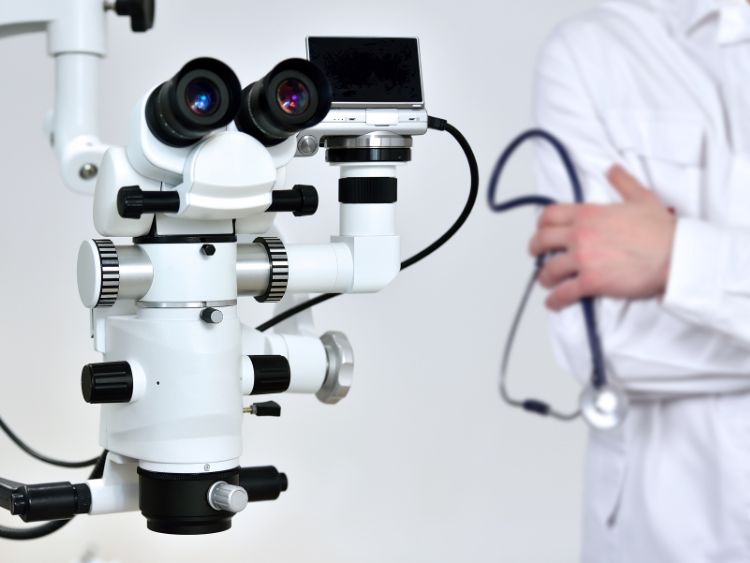Welcome to the fascinating world of microsurgery devices! These incredible tools are revolutionizing the medical field, offering unparalleled precision and effectiveness in delicate procedures. Whether you’re a medical professional or simply curious about the latest advancements in healthcare, this article will provide you with a comprehensive understanding of microsurgery devices. We’ll delve into their types, benefits, and the groundbreaking innovations that are changing the face of surgery. So, buckle up and get ready to explore the marvels of microsurgery!
What Are Microsurgery Devices?
Microsurgery devices are specialized instruments designed for performing surgery on very small structures of the body, such as blood vessels, nerves, and other tissues. These devices enable surgeons to operate with exceptional precision, reducing the risk of damage to surrounding tissues and improving patient outcomes.
Types of Microsurgery Devices
There are several types of microsurgery devices, each tailored to specific procedures and needs. Here are some of the most commonly used ones:
- Microscopes: Essential for magnifying small structures, allowing surgeons to see fine details.
- Microforceps: Used for grasping and manipulating delicate tissues.
- Microscissors: Designed for cutting tiny tissues with precision.
- Microneedles: Utilized for suturing small vessels and nerves.
- Microclamps: Employed to control blood flow during surgery.
Benefits of Microsurgery Devices
Microsurgery devices offer numerous advantages over traditional surgical tools. Here are a few key benefits:
- Enhanced Precision: Microsurgery devices allow for meticulous manipulation of tiny structures, reducing the risk of errors.
- Minimized Tissue Damage: The use of these devices ensures that surrounding tissues remain unharmed during surgery.
- Reduced Recovery Time: Patients often experience quicker recovery periods due to the minimally invasive nature of microsurgery.
- Improved Outcomes: The precision of microsurgery devices leads to better surgical outcomes and higher success rates.
Breakthroughs in Microsurgery Devices
The field of microsurgery is constantly evolving, with new technologies and innovations emerging regularly. Let’s take a closer look at some of the most significant breakthroughs in microsurgery devices.
Robotic-Assisted Microsurgery
One of the most exciting advancements in microsurgery is the integration of robotics. Robotic-assisted microsurgery combines the precision of microsurgical instruments with the enhanced dexterity and stability of robotic systems. This technology allows surgeons to perform complex procedures with greater accuracy and control.
Advantages of Robotic-Assisted Microsurgery
- Enhanced Precision: Robots can perform delicate maneuvers with incredible accuracy, reducing the risk of human error.
- Improved Dexterity: Robotic systems offer a range of motion beyond human capabilities, allowing for more precise movements.
- Minimized Tremors: Robots eliminate the issue of hand tremors, ensuring steady and controlled movements during surgery.
Advanced Imaging Technologies
Innovations in imaging technologies have also significantly impacted microsurgery. High-resolution imaging systems, such as optical coherence tomography (OCT) and fluorescence imaging, provide real-time visualization of tissues and structures. These technologies enable surgeons to identify critical anatomical features and make informed decisions during surgery.
Benefits of Advanced Imaging Technologies
- Real-Time Visualization: Surgeons can see detailed images of tissues and structures in real-time, enhancing their ability to perform precise operations.
- Improved Accuracy: Advanced imaging helps in accurately identifying target areas, reducing the risk of complications.
- Enhanced Decision-Making: Real-time images provide valuable information that guides surgeons in making critical decisions during procedures.
3D Printing in Microsurgery
The advent of 3D printing technology has opened up new possibilities in the field of microsurgery. Surgeons can now create customized surgical tools and implants tailored to individual patients. This level of personalization improves the effectiveness of procedures and patient outcomes.
Applications of 3D Printing in Microsurgery
- Custom Implants: 3D printing allows for the creation of implants that perfectly fit the patient’s anatomy, reducing the risk of rejection and improving functionality.
- Tailored Surgical Tools: Surgeons can design and print tools specific to the needs of each surgery, enhancing precision and efficiency.
- Pre-Surgical Planning: 3D-printed models of anatomical structures help surgeons plan and practice complex procedures before performing them on patients.
FAQs About Microsurgery Devices
What are microsurgery devices used for?
Microsurgery devices are used for performing surgeries on small structures of the body, such as blood vessels, nerves, and other delicate tissues. They are commonly employed in procedures like reconstructive surgery, ophthalmic surgery, and neurosurgery.
How do robotic-assisted microsurgery systems work?
Robotic-assisted microsurgery systems combine traditional microsurgical instruments with robotic arms controlled by the surgeon. The surgeon uses a console to manipulate the robotic arms, which perform the precise movements needed for the surgery.
What is the role of imaging technologies in microsurgery?
Imaging technologies, such as optical coherence tomography (OCT) and fluorescence imaging, provide real-time visualization of tissues and structures during microsurgery. They help surgeons identify critical anatomical features and make informed decisions during procedures.
How does 3D printing benefit microsurgery?
3D printing benefits microsurgery by allowing for the creation of customized surgical tools and implants. Surgeons can design and print tools specific to the needs of each surgery, and create implants that perfectly fit the patient’s anatomy, improving the effectiveness of procedures and patient outcomes.
What are the main advantages of microsurgery devices?
Microsurgery devices offer enhanced precision, minimized tissue damage, reduced recovery time, and improved surgical outcomes. They enable surgeons to perform delicate procedures with exceptional accuracy, leading to better patient care.
Conclusion
Microsurgery devices are at the forefront of medical innovation, offering unparalleled precision and effectiveness in delicate surgical procedures. From robotic-assisted microsurgery to advanced imaging technologies and 3D printing, these breakthroughs are revolutionizing the field and improving patient outcomes. As we continue to explore and develop new technologies, the future of microsurgery looks incredibly promising.
For more information on microsurgery devices and their applications, you can explore the following authoritative sources:
Microsurgery devices are not just tools; they are gateways to a future where surgeries are safer, more precise, and more effective. So, keep an eye on this space, because the world of microsurgery is evolving faster than ever, bringing hope and healing to countless patients worldwide.
